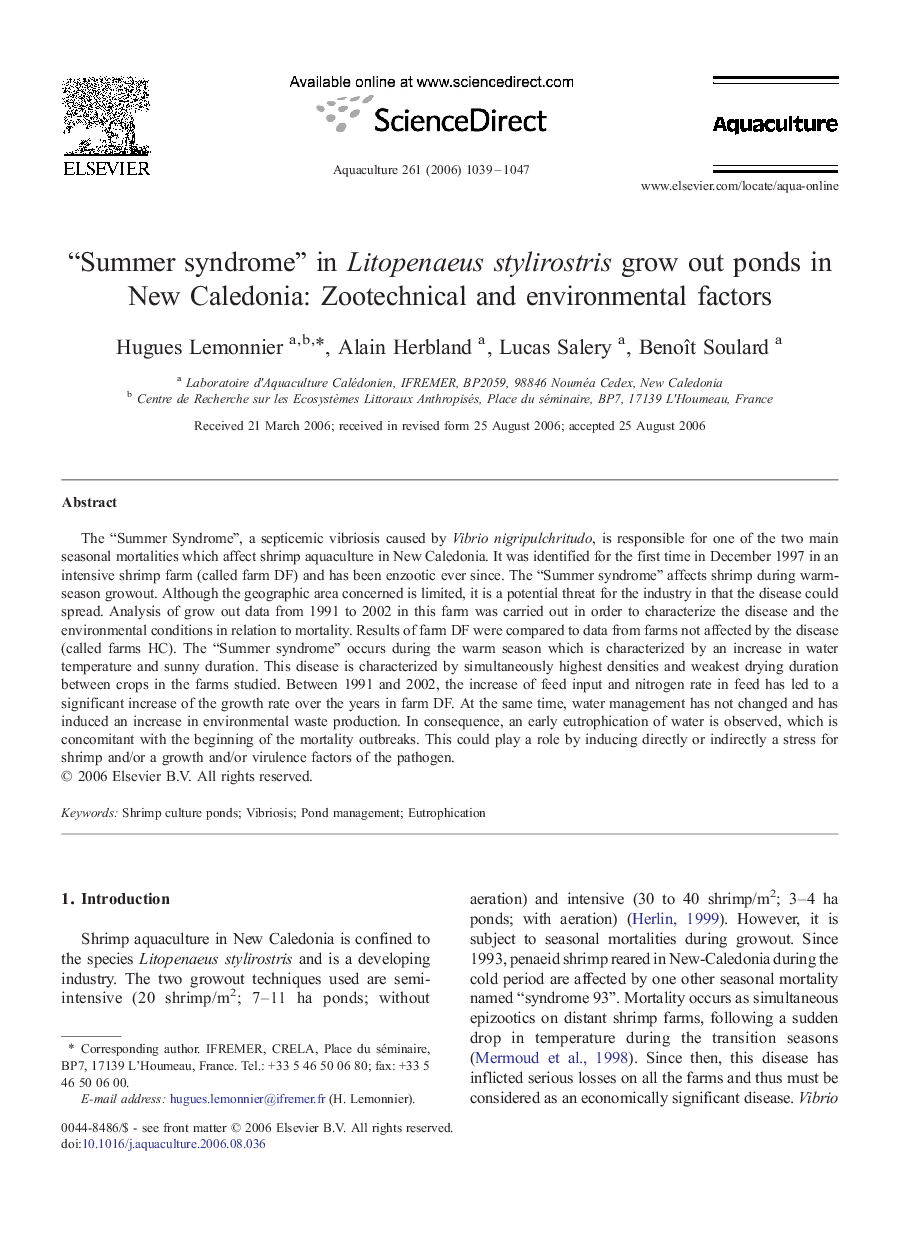| Article ID | Journal | Published Year | Pages | File Type |
|---|---|---|---|---|
| 2425594 | Aquaculture | 2006 | 9 Pages |
The “Summer Syndrome”, a septicemic vibriosis caused by Vibrio nigripulchritudo, is responsible for one of the two main seasonal mortalities which affect shrimp aquaculture in New Caledonia. It was identified for the first time in December 1997 in an intensive shrimp farm (called farm DF) and has been enzootic ever since. The “Summer syndrome” affects shrimp during warm-season growout. Although the geographic area concerned is limited, it is a potential threat for the industry in that the disease could spread. Analysis of grow out data from 1991 to 2002 in this farm was carried out in order to characterize the disease and the environmental conditions in relation to mortality. Results of farm DF were compared to data from farms not affected by the disease (called farms HC). The “Summer syndrome” occurs during the warm season which is characterized by an increase in water temperature and sunny duration. This disease is characterized by simultaneously highest densities and weakest drying duration between crops in the farms studied. Between 1991 and 2002, the increase of feed input and nitrogen rate in feed has led to a significant increase of the growth rate over the years in farm DF. At the same time, water management has not changed and has induced an increase in environmental waste production. In consequence, an early eutrophication of water is observed, which is concomitant with the beginning of the mortality outbreaks. This could play a role by inducing directly or indirectly a stress for shrimp and/or a growth and/or virulence factors of the pathogen.
